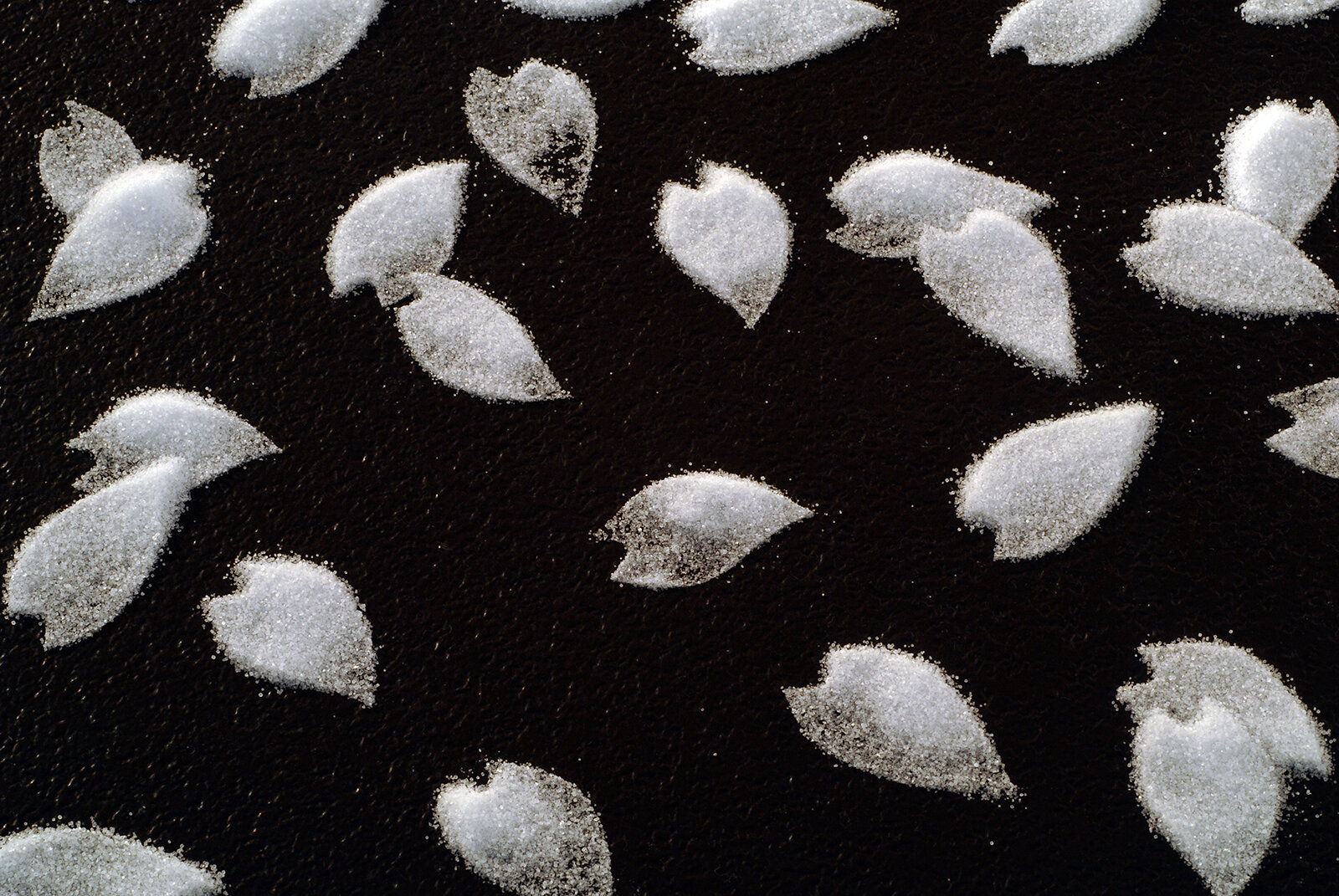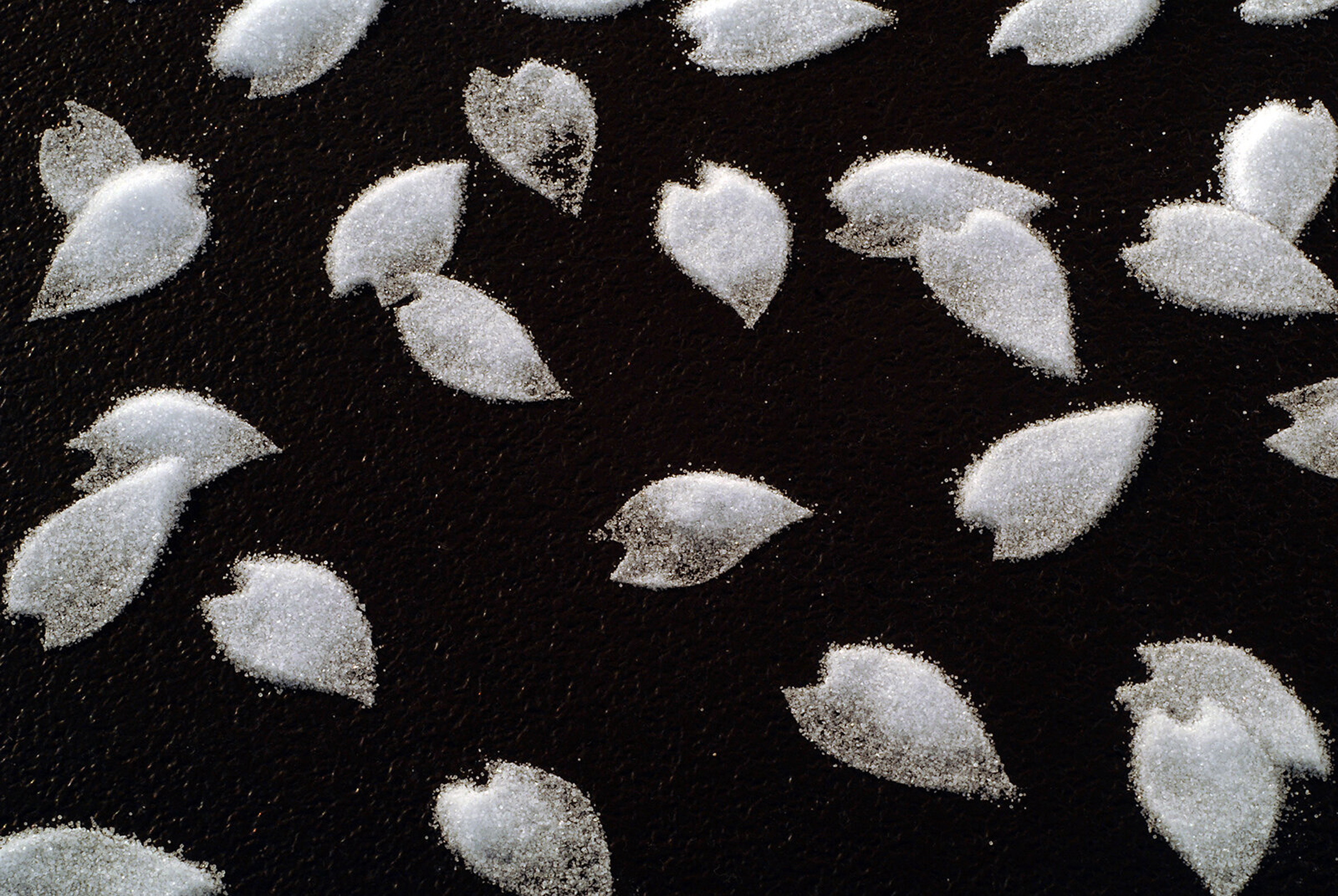
“Our lives, that we live here now, it is always wrapped up in ephemerality”
Soft white piles of salt weave across the floor in delicate and intricate patterns that fill entire rooms. These transient installations are the result of hours of painstaking work from artist Motoi Yamamoto, for whom these creations are a way to remember his sister, who he lost in 1994 to a brain tumour, and his wife, who passed away in 2016 due to breast cancer.
Yamamoto states that he “keeps creating so that I will not forget memories of my family.” He considers the long hours he spends on each artwork as a way to help him to retain those memories. “I look for a convincing form of acceptance to come to terms with the parting of ways.”
On the last day of each exhibition, Yamamoto invites the public to help him destroy the artwork, gather up the piles of salt, and then return them to the sea. The cyclical nature of this act is inherently spiritual and references the cultural use of salt in Japanese traditions such as funerals. NR Magazine spoke to the artist about his practice.
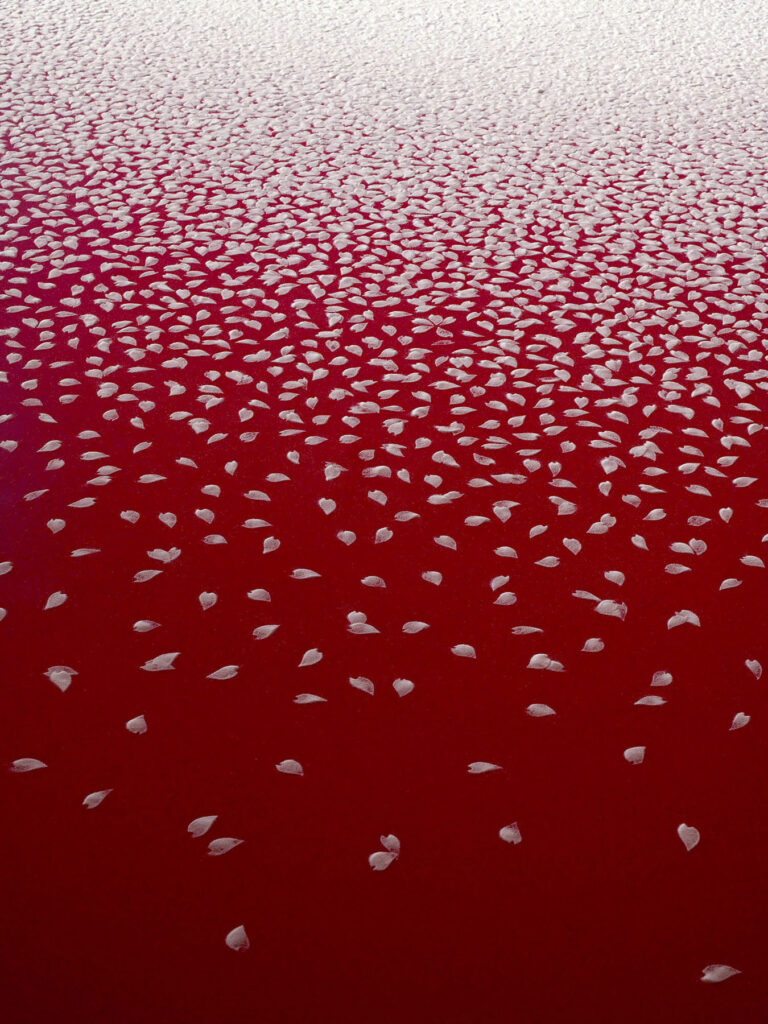
I’ve noticed that you use a fine white seas salt to create your works, have you ever considered using other types of salt like pink rock salt which typically has larger crystals?
I’ve only used it once in the past. In 2011, I used pink Himalayan rock salt in a large-scale solo exhibition in a museum. It was a work that looks like a Japanese rock garden. But one of the major reasons I use salt is its transparent whiteness and beauty as a crystal, so I think I will continue to use salt that looks white in the future.
Do you consider the process behind your work as a form of therapy that can help you work through and deal with the trauma of personal loss?
The reason why I make art is to realise the farewell to the precious persons in a convincing way. I keep making art so that I don’t forget memories of those precious people.
“I see my work as ‘a mechanism to fight against the self-defence instinct of oblivion’.”
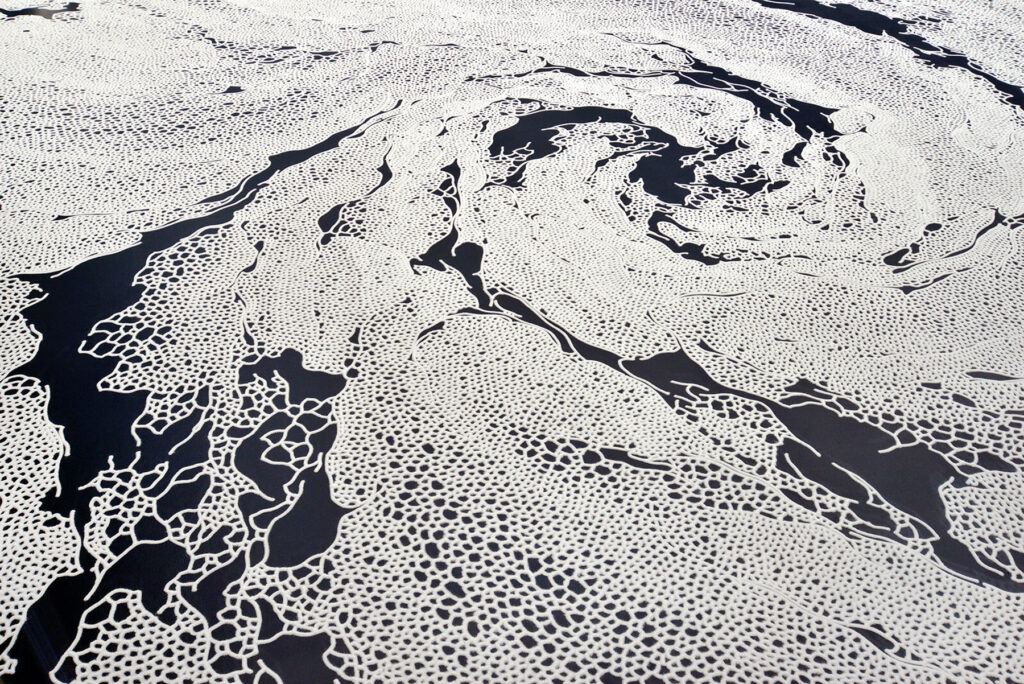
Salt has a particularly traditional and spiritual significance in Japanese culture, but also in many other cultures and practices around the world. What do you think it is about salt that makes it a globally significant and spiritual substance?
Salt is a food necessary to support people’s lives. It is familiar but takes a considerable amount of time and effort to collect, which makes it both rare and essential. Another major advantage of salt is that food can be preserved and stored for a long time by salting. These are important functions of salt that support our life.
You have spoken about how you spend much of your time raising your daughter and that you want your work to look to the future. Do you involve your daughter in your art practice and does her view of the world offer you inspiration for your work?
Basically, making art is a means to solve my own problems. But as she grew up, I sort of adopted changes in her will and mind and opened up opportunities to think about my work together with her. For example, one of the major reasons why I use blue as the underlying part of my work comes from the words my wife spoke before she died, but I asked my daughter about how bright and vivid the blue colour should be, and I decided to use the colour she chose for the work I am going to show this fall.
Both the process you use to create your works and then the returning of the salt to the sea when the installation is over, have an element of ritual to them. Do you think these acts could be considered a form of performance art?
Certainly, there are performance elements in “public production” and “project to return to the sea”. However, it only looks like a performance as a result if you try to categorise it. It’s not my intention to establish it as a performance.
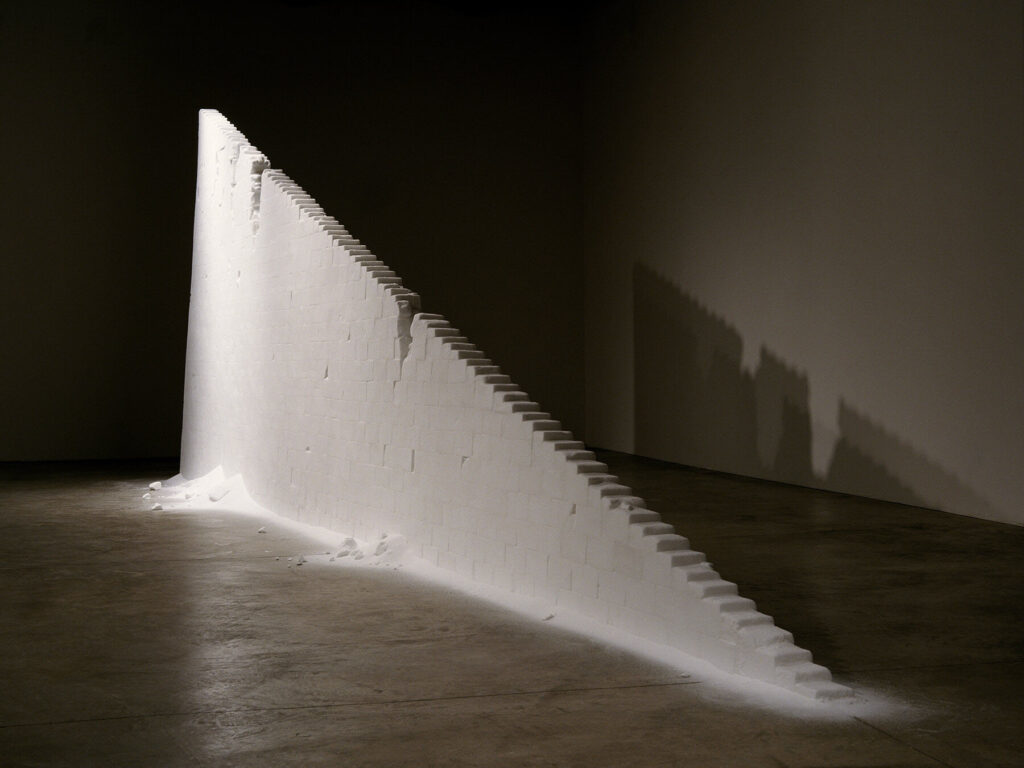
The patterns that make up your work are very organic in their form, is there a particular reason behind this? How do you plan out the designs?
The labyrinth-like complex shape was originally triggered by the winding form of the brain as my sister died of a brain tumour. And labyrinths have a meaning of rebirth. I began to draw the swirling works “Floating Garden” because the form of a vortex has a similar meaning to that of a labyrinth, mainly in East Asia.
What was the most challenging installation you worked on and why? How did you overcome these challenges?
One of the most difficult works was a solo exhibition at a church in Cologne in 2010 in cooperation with MIKO SATO GALLERY. From 5:00 a.m. to 9:00 p.m., I worked more than 14 hours a day. Because I decided that the area originally planned was not enough to face the majestic space, it was necessary to take far more time than initially planned. With the help of the gallerist, the director, and many others, I managed to create a very satisfying work. The time I spent in Cologne is my treasure.
There is an ephemeral nature to both your completed artworks and the medium you use to create them. Do you think that nature is something that originally drew you to creating art in this way?
Since my sister and wife passed away at a young age, I always spend a finite time, permanently conscious of death. Even while I’m answering your question I am using my limited lifetime. There is no doubt that it is a very precious and limited time. Our lives, that we live here now, it is always wrapped up in ephemerality.
What advice would you give young creatives who want to create installations but perhaps don’t have the space or the resources to do so?
After my wife died, I cancelled all my work to rebuild my life with my daughter. And I printed out hundreds of photos of my memories with my wife and put them on the wall of my room. That’s when I became suddenly aware that creating an installation and putting photos on the wall are equivalent to me.
My aim is to remember people who are precious to me, and I want to make sure that I never lose sight of the fact that creating installations with salt is just a means to get closer to that aim.
What projects are you working on at the moment and what plans do you have for the future?
This year I am working on a new project. The Oku-Noto International Art Festival is a big challenge. Create huge installations in what was once a nursery. It is a plan to combine an area that uses a large amount of salt with an area drawn with paint. I’ll paint the walls, ceilings and floors of the nursery with the light blue colour that my daughter chose.
From next year onwards, I would like to realise exhibitions overseas again, for example in Germany, France and other countries.
